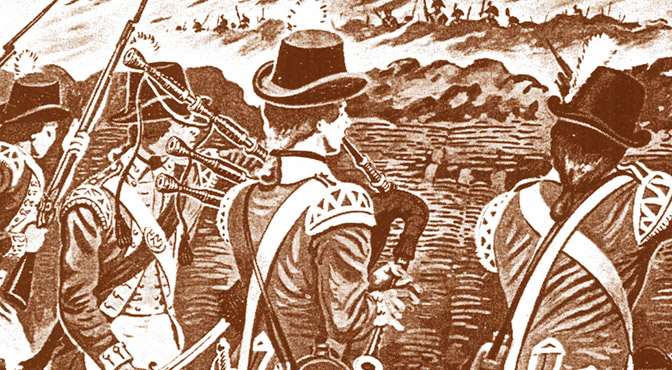
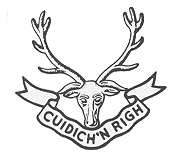 Today we have the fourth and final instalment of our abridged excerpts from the above named book by Ian Hamilton Mackay Scobie. The book was published in 1924 and is now out of print. This excerpt talks of the origins of the famous Seaforth Collection of Pipe Music, one of the best regimental collections, and prized for its settings and variety of tunes. This excerpt also reveals early actions against the French in India which endeared the bagpipe to the officer class and paved its way for broad acceptance in the British Army. Finally there is mention of a piping college which existed in Kintail under the aegis of the MacRaes, the first time have heard mention of this college….
Today we have the fourth and final instalment of our abridged excerpts from the above named book by Ian Hamilton Mackay Scobie. The book was published in 1924 and is now out of print. This excerpt talks of the origins of the famous Seaforth Collection of Pipe Music, one of the best regimental collections, and prized for its settings and variety of tunes. This excerpt also reveals early actions against the French in India which endeared the bagpipe to the officer class and paved its way for broad acceptance in the British Army. Finally there is mention of a piping college which existed in Kintail under the aegis of the MacRaes, the first time have heard mention of this college….
The list of present day Duty-Calls, as laid down in 1912 for the use of the 1st, 2nd and 3rd Battalions of the Regiment is as follows:
Reveille: Hey, Johnny Cope!
1st Meal Pipes: Bundle & Go
2nd Meal Pipes: Brose & Butter
Officers’ Mess Pipes: Bannocks o’ Barley Meal
Dress for Parade: Cabar Feidh
Staff Parade: Highland Laddie
Fall-in: MacKenzie Highlanders
March Past: Pibroch o’ Donald Dubh
March into Barracks: Campbells Are Coming
Tattoo: 72nd Quickstep (Hurichum, Harichim)
The Charge: Cabar Feidh (strathspey)
General Salute: War or Peace (1st four bars)
Retreat: I Hae a Wife o’ My Ain
Lights Out: Sleep, Dearie Sleep
Funeral Salute at Grave: Lochaber no More
Funeral Marches: Flowers o’ the Forest, Land o’ the Leal
Marching to Church: It has long been a custom of the Regiment to march to church without music
In order to further the standardising of tunes in general, and at the same time secure the necessary materials for a Collection of Regimental Music, a movement has recently been made to obtain from the various battalions, settings of those tunes either connected with, or in use by, them and to compile the whole into a music book entitled ‘Duty and Favourite Tunes of the Seaforth Highlanders’.
Towards this end past and present Pipe Majors and others interested have kindly offered their services. To complete such a work is manifestly not easy, but a start has been made by the 1st Battalion, whilst the 2nd Battalion has already the nucleus of their contribution in the small book of tunes published some years ago by the late Captain Galloway. It is hoped that this excellent idea may yet be realised.
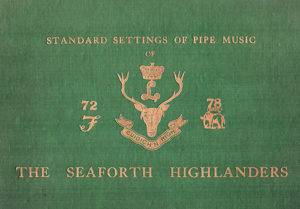
The playing of Ceol Meadhonach (Middle Music), i.e. tunes neither constructed in the measure of a piobaireachd, nor adapted for the quick march or dance, and which include many of the oldest Highland airs, has of late years been encouraged in the regiment where they are played at Retreat.
The following is a list of Pipe Majors of the 1st Seaforth Highlanders from its raising in 1778 up to the present day. The list is complete except for a gap of some years at the end of the 18th and the beginning of the 19th centuries:
1778 Roderick McKenzie, 1784 Donald MacRae, 1789 unknown
1798 Malcolm MacKenzie, 1810 – ? unknown, To 1828 Donald MacDonald, 1828 Hugh Ross, 1840 Neil Mathieson, 1848 Duncan MacPherson, 1850 Lachlan Mackay, 1852 Neil Mathieson (again), 1854 Ronald Kemp/John MacDonald (acting), 1856 John MacDonald, 1864 John Smith, 1865 Alex Calder, 1878 James Hamilton, 1878 James Maxwell, 1879 none appointed, 1880 James MacDonald, 1888 Donald MacKenzie, 1893 James Sutherland, 1894 William Ross, 1900 William Taylor, 1909 David Mathieson;
Great War: James MacLellan, James Stewart, Neil MacKechnie, William Paton, James MacLellan (again), Colin MacKay, Neil MacKenzie (again), James MacKenzie, 1919 John Haywood.
[wds id=”6″]
The pipers, like the officers and sergeants wore the broadsword slung in Highland fashion at the back in a shoulder belt of white pipe-clayed buff leather with silver buckle, tip and slide….In other details of dress the pipers appear to have been similar to the men, the Pipe Major having superior appointments. The number of pipers in a regiment generally depended upon the wishes of the commanding officer and varied from time to time. Each company was allowed two drummers, the flank companies having in addition a fifer…A brass band was added some years after the regiment was raised, which for a time had several foreigners (Germans or Swiss).
The Earl of Seaforth’s Highlanders after being embodied at Elgin, marched to Edinburgh preparatory to embarking at Leith for the East Indies and entered the Castle headed by their pipers on July 7th, 1778. A rumour having been spread that they were to be sent as slaves to the West Indian plantations, the Highlanders, in the absence of their chief, refused to proceed and, hoisting several plaids on poles, marched with their pipers to the King’s Park and enthroned themselves on Arthur’s Seat. The arrival of the Earl of Seaforth coupled with the conciliatory efforts of Lord Dunmore, General Skene and others, speedily brought what came to be known as the ‘Affair of the Wild MacRaes’ to an end.
At the spirited ‘Defence of Jersey’ in January 1781, their first experience of active service, Seaforth’s Highlanders took a leading part. This result was, in no small measure, furthered by the pipers, who at the head of their companies struck up appropriate airs and continued to play during the bitter and long drawn out fighting which took place in the streets of St Helier before the French were forced to surrender.
On the voyage to India (1781 – 82) their Colonel and Chief, Earl Kenneth, died very suddenly. The Pipe Major Roderick MacKenzie composed a piobaireachd on his death but it had such a depressing effect on the men that he was soon forbidden to play it. The voyage was so disastrous (247 men dying of disease on the passage, and 359 invalids being landed on arrival) that Major James Stuart of Blairhall, who was then in command, gave orders that no laments or melancholy tunes should be played, only lively marches, jigs and strathspeys.
In 1782 several sanguinary battles in Indian waters were fought with the French fleet. In one of these engagements Seaforth’s Regiment was represented, the men being encouraged by their pipers during the action. At the attack on the French lines in front of Cuddalore in 1783 …in the bitter fighting that took place lasting from about four in the morning until near five in the evening, the weary men were ‘renovated by the sound of the bagpipe, leading them to victory.’
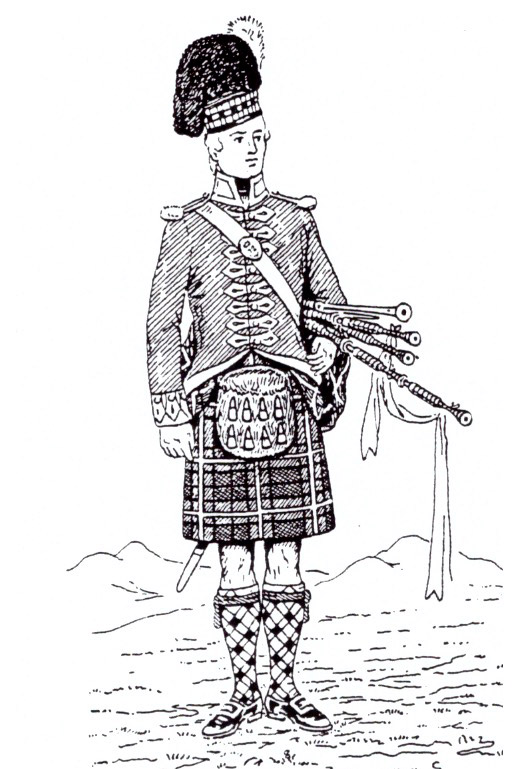
During the long campaigning in India from 1782 to 1797 the pipers were kept up and performed yeoman service. In Madras in 1783 after fording the river at the close of a long day’s march, when the other troops were flinging themselves on the ground incapable of further exertion, the pipers of Seaforth’s Highlanders struck up a lively tune and the men of the regiment began to dance reels to the amazement of the onlookers.
At the siege of Pondicherry in August 1793 while the Grenadiers and the 72nd were doing duty in the trenches exposed to burning sun and severe cannonade from the fortress the piper……was ordered to play some pibrochs to enliven the men [see main picture]. On the pipes being struck up the fire of the enemy immediately slackened and soon after almost entirely ceased, the French crowding upon their works in their amazement at the unwonted sound.
Donald MacRa, commonly known as ‘Domhnuil Ruadh’ (Red Donald) hailed from Applecross in the west of Ross-shire. Born in 1755, he had joined the regiment on its being raised. He was a very fine exponent of pipe music and had received his early musical instruction from those who had themselves been taught by the old masters. It is said that Donald MacRa went from Applecross to study music in Kintail under a family of MacRae pipers. It seemed that there was a kind of piping college in Kintail somewhat similar to the MacCrimmon college at Borreraig in Skye, and as the MacCrimmon pipers were known as the ‘oineach’ [honorable] so the MacRae pipers were known as the ‘maighdean’ [maiden: novice?]. In July 1791 we hear of him winning first prize at annual piping competition held in Edinburgh.
• Read the earlier excerpts in this series here.
[wds id=”3″]

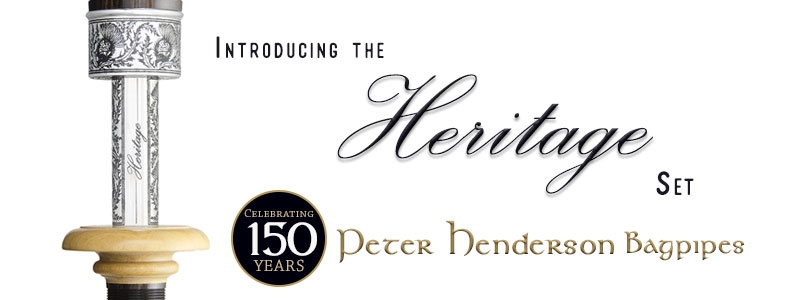

















Recent Comments